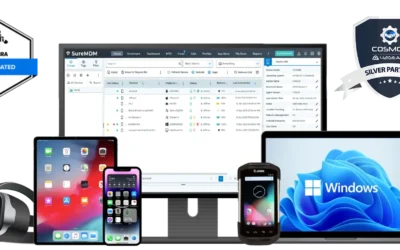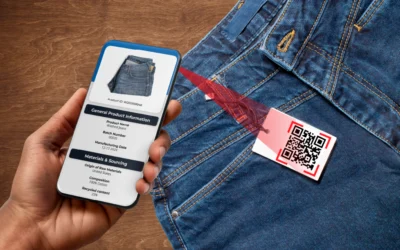Originally published on rfidjournal.com
Partnering with an expert that understands how radio frequency identification and other technologies work can help you get the most out of your investment.
Radio frequency identification (RFID) systems are powerful tools for optimizing supply chain and inventory management, but there are times when deployments don’t come to fruition. When we dig into those cases, we often find a few common factors at the source of the problem. Some may feel RFID isn’t right for their business because the technology didn’t work as expected with their process, or their solution provider wasn’t able to help them overcome initial challenges post-deployment. In some cases, deployments fall short simply due to limited internal IT resources to support the project successfully.
In most cases, these types of situations could be avoided if a few fundamental steps are followed. These tips could easily be applied to almost any Internet of Things (IoT) investment. Here’s a brief look at each of the four steps:
Determine if RFID Is the Right Technology for Your Application
RFID can solve a lot of asset-tracking and inventory-management challenges, but it’s not necessarily the right solution for every business problem. On a fundamental level, some environmental factors may interfere with RFID, such as labels on metal surfaces or tags on containers of liquid. Planning ahead will allow your provider to recommend and test the appropriate tags and labels to overcome any potential issues.
It’s also important to remember that RFID is not GPS. RFID is a technology that tracks items at key read points in a given workflow; meaning it cannot track items in real-time over long distances like GPS technology. That being said, the variety of RFID tags, labels, readers, antennas and software that are available today make it possible to design and deploy an RFID solution that will address nearly any tracking or inventory-management challenge. The first step is to engage an experienced technology partner that can conduct a detailed RFID assessment and site survey to determine if RFID can deliver the results you expect in your environment.
Calculate Your Expected ROI
Like any technology-based solution, RFID is an investment, and as with any investment, you will want to know what kind of return on investment (ROI) you can expect. Evaluating ROI can be challenging simply because RFID has so many components. A technology partner that knows all the ins and outs of RFID will be able to walk you through the system costs, including the hardware, software, tag, printer and deployment expenses you’ll incur to build a functioning solution.
A good partner will also be able to help you quantify the benefits you can expect to see, including labor savings and more efficient inventory management. The good news is that RFID is often the right solution for the majority of enterprises, and the technology can even be cost-effective for smaller businesses with limited budgets.
Integrating RFID with Existing Applications
Because RFID offers so many different options and can be utilized in so many different ways, it’s essential for businesses to complete a thorough discovery process in order to determine how the technology will be integrated with existing applications. A well-designed RFID system can feed data to multiple areas of your business, so it’s critical to coordinate with all internal stakeholders during the exploration, design and implementation stages. This will ensure that everyone understands what opportunities are being created.
Extending the usage of RFID data beyond inventory management into manufacturing workflows and other areas of the business is one of the best ways to ensure maximum ROI from an RFID investment. An experienced technology partner will add tremendous value by helping you integrate RFID data into applications across your entire operation.
Making Use of Real-Time Data
Perhaps the biggest shortcoming of any data-collection system is the failure to put tools in place that will allow you to capitalize on the data you collect. This is especially true for RFID systems, which have the potential to collect a lot more data than other systems. The key, of course, is to understand how that data will be turned into actionable information that can be used to enhance decision-making in real time.
Whether your business will benefit from automating inventory replenishment or sharing real-time shipping information with customers, it’s essential to identify and evaluate the specific processes you want to improve, then ensure that the RFID system delivers that data where and when the applications require it. Your technology partner’s initial RFID assessment should help you work through this key step.
If there’s one common theme in these four pointers, it’s that partnering with an expert that understands how RFID and other data-collection technologies work, along with experience in data and network communications, will help you get the most out of your investment and guide you through areas of your business that can benefit.



